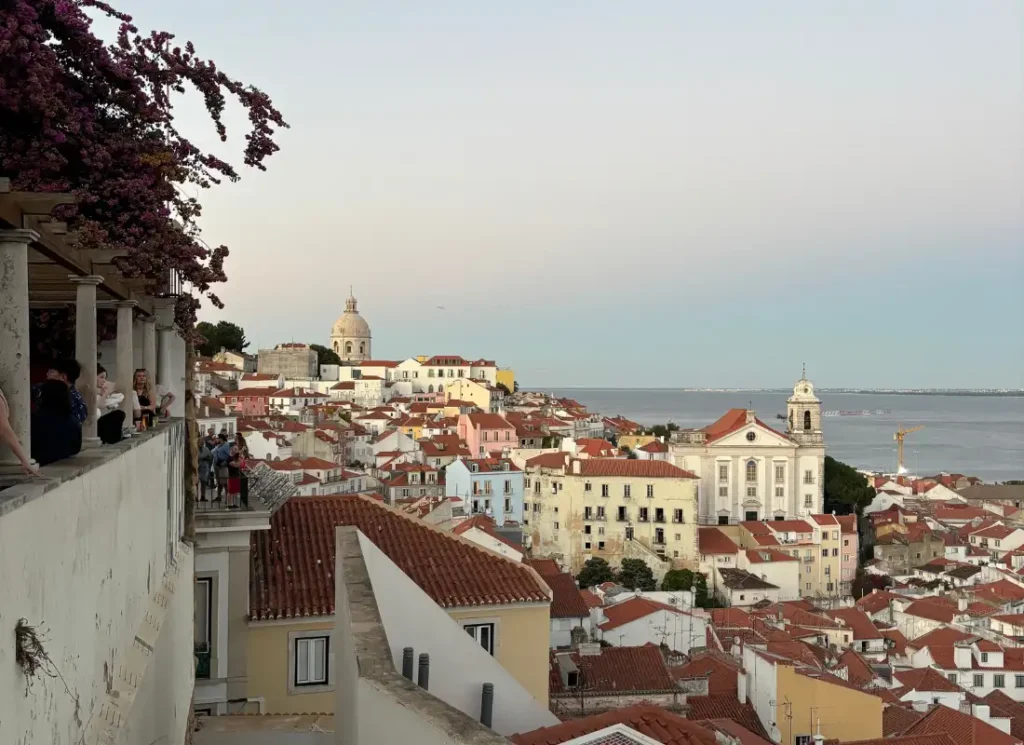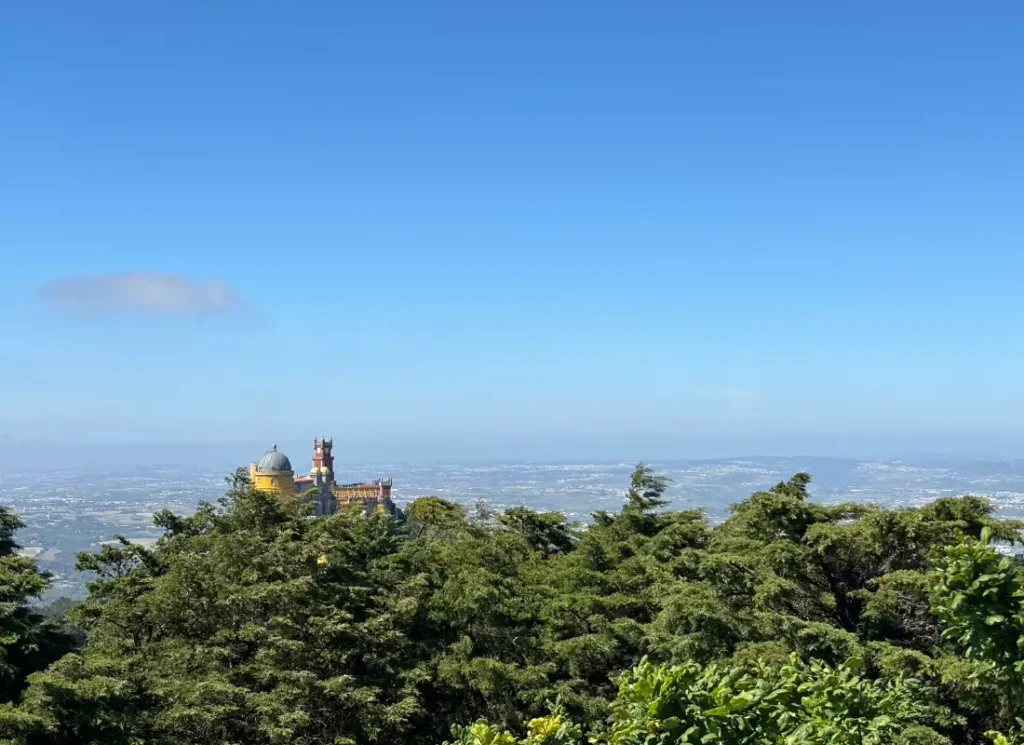I don’t know about you, but until a few years ago, the only tourist destination I’d ever ever heard of in Portugal was the Algarve. I’m not even completely sure that I knew the Algarve was in Portugal, I just knew it was a place that Brits commonly went on holiday.
Well, fast forward a decade and Lisbon, the capital of Portugal, has been my home for almost three years now. Over the years I’ve seen a lot of this small-but-mighty country in the very west of Europe, and all of the culture it has to offer. Given its size, there really is an impressive number of things to do in Portugal, and I certainly haven’t discovered them all myself yet.
Whilst I almost exclusively write based on my own experiences, I have included a couple of things on this list that I haven’t yet done myself. That’s because they’re so high on my bucket list, or because I’ve heard such great things about these places from my friends in Portugal.
Another note: Whilst the Algarve is beautiful, it’s been very well written about by plenty of other travel bloggers and the main things to do there are see the beaches, and visit the Benagil Caves, which I wouldn’t recommend to visit at the moment as access to them has been heavily restricted following over-tourism.
So, you might notice that there’s not much about the Algarve region on this list of things to do in Portugal – instead I have tried to capture some of the things other travel bloggers haven’t, using my own knowledge as a person-who-lives-in-Portugal (although I’m not Portuguese). I’ve focussed on three main areas: Lisbon, Porto and Coimbra, because they’re all great cities in their own right and give you access to most of Portugal’s amazing sights.
So, without further ado! Here are the best things to do in Portugal.
Things to do in Portugal in and around Lisbon
Lisbon’s Historic Neighborhoods
One of the reasons I love Lisbon is that there is so much culture and history that can be seen just wandering the streets of old neighbourhoods like Alfama and Mouraria. The historic center of Lisbon is actually really large and there are a lot of different architecture styles to see. By far the most famous and, by many accounts, the most beautiful, is the historic neighbourhood of Alfama.
Alfama is full of narrow streets and small restaurants to eat local cuisine and watch Fado (more on that later!), although as it has become more popular with tourists it is getting quite expensive. That being said, it doesn’t feel touristy when you’re there and it’s well worth the money for a great experience.
If you’re interested in learning more about the history of the city, Alfama is a great place to take a guided tour or, even better, a food tour.
📍Book your food tour in Alfama
*some links in this article are affiliate links
Jerónimos Monastery
Jerónimos Monastery is the monastery in the Lisbon district of Belem. It’s a short tram ride out of the city, and there are quite a few other things to see in the area like Belem Tower and the Padrão dos Descobrimentos (The Monument to the Discoveries). A day out in Belem should definitely be on your list of things to do in Portugal, but if you can only do one thing, I’d recommend visiting the Monastery.
Whilst Belem Tower is beautiful to look at from the outside, there’s not much to see inside.
It costs around 10€ to enter, and you have to buy a ticket before you join the long queue to the entrance. You can either do this online or at the ticket office which is further to the left than the actual entrance if you’re looking at the monastery from the front.
Speaking of long lines! There is almost always a big queue outside of the Jerónimos Monastery, but don’t let this put you off. Because this queue is for people who already have tickets, it usually moves very quickly. I’ve been there three times (showing friends around the city, I’m not obsessed with the monastery, I promise), and I’ve never waited more than five or ten minutes to enter.
Palácio da Pena
Palácio da Pena (also known as Pena Palace) is the colourful palace at the top of the hill in Sintra, which is a 40 minute train ride from Lisbon. Not to be confused with Sintra Palace, which is in the town of Sintra itself (rather than up the hill). Also not to be confused with the Moorish Castle in Sintra (which is also worth a visit).
You buy two separate tickets when you visit Pena Palace; one to get into the gardens, and one to get into the palace itself. You can enter the gardens at any time that day, but you will be given a set time to enter the palace, and you have to stick to it. To hike to the palace from Sintra town is 40-60 minutes uphill, depending on your pace, or you can take a taxi or a tuk tuk.
Once you arrive at the gardens, it’s another 15 minutes walking to get to the palace.
It’s also worth factoring in some time to explore the gardens of the palace. They are beautiful and there’s a lot to see, and there are some viewpoints that give you an amazing view of Palácio da Pena sitting on top of the hill.
Fado Performance
Now, as I mentioned, Fado music is an important part of Portugal’s rich history. It is quite melancholic, but it is beautiful, and it’s common to listen to a live performance during an intimate dinner. The small restaurants in Alfama are the best place to go for Fado, and the musicians will likely come quite close to your table, so be prepared for an intimate performance.
It’s a really unique experience and, before I went the first time, I really thought it was going to be depressing because of the sadness of the music, but it really isn’t at all!
📍Book your Fado performance in Alfama
Pastéis de Belém
Now I’m sure you’ve heard of the pastel de nata (pastéis de nata is the plural, by the way), but have you heard of the pastel de Belém? Some people swear they can taste the difference but other people (aka me), think that they taste the same. A bit like how champagne can only come from the Champagne region of France, pastéis de Belém can only come from Belem, the same area of Lisbon as Jerónimos Monastery.
The original pastel de belem came from a store close to the monastery, and is widely known as the birthplace of the pastel de Belem (and the pastel de nata).
🇵🇹 Read more: What to Order in a Portuguese Pasteleria
Sesimbra
Sesimbra is a small town and region about an hour south of Lisbon. If you rent a car it’s easy enough to go to Sesimbra as a day trip; otherwise, arriving by public transport takes quite some time and it would make more sense to spend the night there. Whilst it is a small town it is really lively and has a completely different vibe and culture to Lisbon itself.
I always joke that going there feels like going on holiday, even though it’s just an hour away from my apartment. Both the town and the region of Sesimbra have stunning beaches spanning the Atlantic Coast. If you want beach town holiday vibes, the beaches in Sesimbra are exactly that. If you prefer something quieter and a little less touristy, try Ribeira do Cavalo or Arrábida beaches.
Óbidos
Óbidos is a mediaeval town just over an hour north of Lisbon by car, or an hour and a half by public transport. It’s a really charming town where you can explore mediaeval architecture, visit the castle, and go back in time as you walk the cobbled streets.
It’s also quite well known for the Óbidos mediaeval festival which takes place towards the end of July each year.
Quinta da Regaleira
Quinta da Regaleira is a lesser known attraction in Sesimbra, which you can find on the road route towards Pena Palace. You can also walk to it easily from Sesimbra town by passing by the trailhead for the short hike to the Palace. It’s not the kind of attraction that will take you all day to see, but compared to the other attractions in Sesimbra it is still somewhat of a hidden gem, and is most well known for its spiral staircase.
Portugal’s Islands
Now, obviously, Portugal’s islands are not exactly “in and around Lisbon”, they are not even on mainland Portugal. But, there seemed like no point in giving them a section to themselves, and the cheapest and most regular flights all go from Lisbon. So, that’s why we’re here!
The two main islands or groups of islands are the Azores (Açores) and Madeira. The main airport for the Azores Islands is Ponta Delgada airport, and the main airport for Madeira is called Madeira Airport but more commonly referred to as Funchal.
The islands are known for literally incredible views, amazing hikes, and baroque architecture. Trust me when I say the islands are not to be missed, and if you have the chance to squeeze them into your Portugal itinerary, do it!
🇵🇹 Read more about Portugal: An Honest Review of Madeira
Things to do in Portugal in and around Coimbra/Central Portugal
Learn to Surf
Thanks to the very enthusiastic waves of the Atlantic Ocean, the entire coast of Portugal is a great place to surf, if you’re an experienced surfer, or learn as a beginner.
Portugal was home to the highest wave ever surfed, which was this year (2024) in Nazare by professional surfer Sebastian Steudtner. However, there are also plenty of smaller waves along the entire coast. The shape, size and position of the beach all factor into how big the waves are, so an instructor will be able to tell you where to find smaller waves to learn in. Or, if you’re an experienced surfer, you’ll also have plenty to choose from.
Roman Ruins of Conímbriga
Conímbriga is one of the largest Roman ruins ever excavated in Portugal, and is really accessible to visit being just 12 miles from the city of Coimbra. It is classified as a National Monument, and there’s a lot to learn from these ruins about the Roman era and the part Portugal had to play in this civilization. The best parts, in my opinion, are the gardens and the intricate mosaic flooring.
Things to do in Portugal in and around Porto
Douro River Cruise
The Douro River runs through the Douro Valley, or the Douro Region in northern Portugal. This area is most well known for its wine production, but there’s a lot more to see here than just drinking wine. One of the best ways to explore this region of Portugal is by taking a river cruise down the river itself, which you can do alongside a range of activities like tastings of food and drink, traditional Portuguese lunch, or simply watch the sun set over Porto’s stunning scenery.
Peneda-Gerês National Park
Peneda-Gerês National Park is a national park in the very north of Portugal, an hour and a half drive from Porto. If you want to visit the national park for more than one day, there are some places to see within the national park itself, otherwise Gerês is the closest town to Peneda-Gerês National Park. It is the only national park in Portugal and is an absolute must-see for nature lovers or avid hikers.
The best time to go to the national park is during the spring, especially if you want breezy weather to hike in, but it can be appreciated year-round thanks to Portugal’s mild climate.
Wine Tasting in the Douro Valley
Speaking of the Douro Valley, if you are someone that drinks then you can’t miss taking a wine tasting in one of Portugal’s most famous wine regions. The Douro Valley is one of Portugal’s UNESCO World Heritage Sites, thanks to its picturesque landscapes and cultural history. It is also the birthplace of port wine.
Most tours will take you around the vineyards, wine cellars and give you tastings of the locally produced wines.
📍Book your Wine Tour in the Douro Valley
Gerês Thermal Springs
The thermal springs in Gerês, or Termas do Gerês, are naturally heated pools of water that you can swim in inside Peneda-Gerês National Park. The thermal springs, like many, are said to have medicinal properties that can heal all manner of ailments.
They aren’t open to the public in the way that many thermal baths are; in fact, to bathe in the healing waters of Termas do Gerês you need a prescription or to visit one of the local spas. If you want to visit the hot springs without the price tag, you will need to hop over the border into the Spanish side of the national park!



